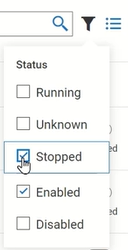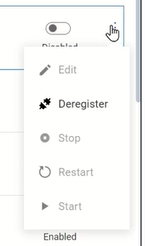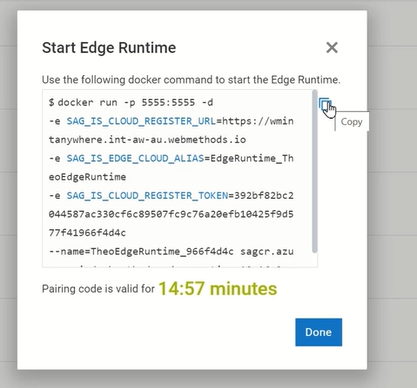products: webMethods.io Integration
Introduction
Managing edge runtimes is crucial to ensuring efficient, secure, and reliable operation of your edge computing infrastructure.
In this how-to, learn how the webMethods.io centralized control plane lets you easily manage edge runtimes both on-premises and in the cloud. This is the first of a series of webMethods.io Integration tutorials exploring the platform’s Super iPaaS Develop anywhere, deploy anywhere capabilities.
Prefer watching a video? See our Developer Evangelist Theo Ezell walk through the steps in this video tutorial:

Manage Edge Runtimes with WebMethods.io | Demo (softwareag.com)
Pre-requisite
A webMethods.io Integration environment.
Note : These capabilities are not available by default. Contact your sales representative for more information.
Steps to follow
Log in to your webMethods.io Integration environment and click the Integration Runtimes tab:

And you will see a list of your Runtimes:
The Integration Runtimes tab provides centralized control for your Edge Runtimes, which can be hosted on-premises, as well as in a private or public cloud.
On the other hand, the Default (Cloud) Runtime is managed as part of your Integration tenant. Therefore, you can only view it. However, from this centralized control plane, you can fully manage the registered Edge Runtimes. Registering an Edge Runtime is covered in a separate tutorial (link).
The default Runtimes view is cards and can be switched to list view from the buttons in the top-right:

It will show the same information but as a table. Both views show 19 runtimes per page, plus the add new runtime icon:

If you’re looking for something specific, you have a couple of ways to narrow down the runtimes displayed. The first is filtering. Click the filter icon:

and you can narrow the view based on the status of the runtime and/or whether it is enabled or not. For example, I can view only the runtimes that are enabled but stopped.

In addition, I can use the search box to see only the runtimes where the name contains a certain string. Note that the search is not case-sensitive. So, if I enter lower case “theo” I can narrow the view to the runtime I want to manage.
Looking at the TheoEdgeRuntime, I can see my Edge Runtime is both running and enabled. If I disable it, I can no longer perform any actions on it, but the server instance will continue to run as a standalone.

If I edit it, I can change the name or the description.
From the context menu, I can also restart the runtime. I can also simply stop the runtime, but there is no way to start it from here. Instead, when I click start, I will get a new container startup command that I can copy:

and I have toI’ll then go to the container host and paste the command to start the runtime manually.
Lastly, if I no longer need an edge runtime, I can deregister it. Deregistering a runtime removes it entirely from the control plane. But of course, just like disabling it, the server will still run as a standalone.
What’s next
Now we’ve seen how easy it is to manage your Edge Runtimes from the webMethods.io Integration centralized control plane. Next, learn how to use the observability features of the webMethods.io Integration control plane to monitor your Integration Runtimes remotely from this how-to:
Monitor your integration runtimes remotely with webMethods.io Integration
Useful links | Relevant resources
#webMethods-io-Integration#Super-iPaaS#webMethods-cloud#webMethods